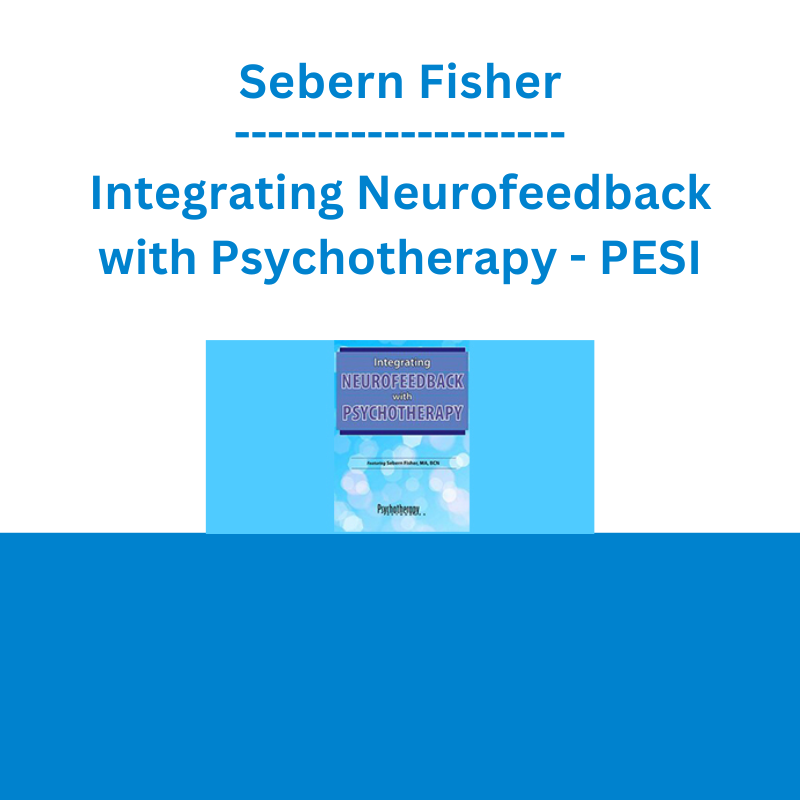*** Proof of Product ***
Exploring the Essential Features of “Sebern Fisher – Integrating Neurofeedback with Psychotherapy – PESI”
Integrating Neurofeedback with Psychotherapy
Speaker: Sebern Fisher, MA, LMH, BCN
Duration: 2 Hours 17 Minutes
Format: Audio and Video
Description
Try as we might through talk and somatic therapies, it can be very difficult to shift the states of fear, shame, and rage that haunt clients with early developmental traumas. Fortunately, recent research shows that using neurofeedback to train the brain to fire in new ways can quiet these trauma-based affects, and create a space for healing.
Speaker
Sebern Fisher, MA, LMH, BCN
Sebern Fisher, MA, LMH, BCN, is an interntionally-recognized expert on the use of neurofeedback in the treatment of deveopmental trama and best-selling author of Neurofeedback in the Treatment of Developmental Trauma: Calming the Fear-Driven Brain. She has been working with traumatized people for over 35 years and has integrated Neurofeedback and psychotherapy in her treatment of developmental trauma in adults and adolescents for the past 20 years.
Prior to adopting Neurofeedback, Sebern was the clinical director of a residential treatment program for severely disturbed adolescents for 15 years. While there, she introduced the understanding of the impact of attachment rupture and was the first to implement DBT in a residential setting.
Sebern consults and trains on the integration of Neurofeedback and therapy, nationally and internationally.
Speaker Disclosures:
Financial: Sebern Fisher maintains a private practice and receives royalties as a published author. She receives a speaking honorarium from EEGer. Sebern Fisher receives a speaking honorarium, recording royalties and book royalties from PESI, Inc. All relevant financial relationships with ineligible organizations have been mitigated.
Non-financial: Sebern Fisher has no relevant non-financial relationships.
Objectives
- Discover how trauma alters the developing brain, and how, by changing brain waves and reactivity in the brain through biofeedback, we can regulate or reverse those alterations.
- Discover clear steps for integrating neurofeedback into your practice, including how to introduce the approach, deliver psychoeducation, and assess its effectiveness.
- Discover user-friendly guidance on how neurofeedback works to quiet hard-to-treat states of fear, rage, and shame.
Outline
Neglect and abuse in early childhood impacts the developing brain
- Review of latest research
- Clinical impact
- The multiple meanings of symptoms
Sub-cortical drivers in developmental trauma
- Pervasiveness of ambient fear
- Anger and the anti-social element
- Shame in the absence of self
The science of neurofeedback
- The electrical circuitry of brain function
- Brain plasticity in how the brain fires
Integration of neurofeedback and psychotherapy
- Training the brain toward self-regulation
- Helping your patient to self-regulate
Target Audience
- Psychologists
- Physicians
- Addiction Counselors
- Counselors
- Social Workers
- Marriage & Family Therapists
- Nurses
- Other Behavioral Health Professionals
Please see the full list of alternative group-buy courses available here: https://lunacourse.com/shop/









